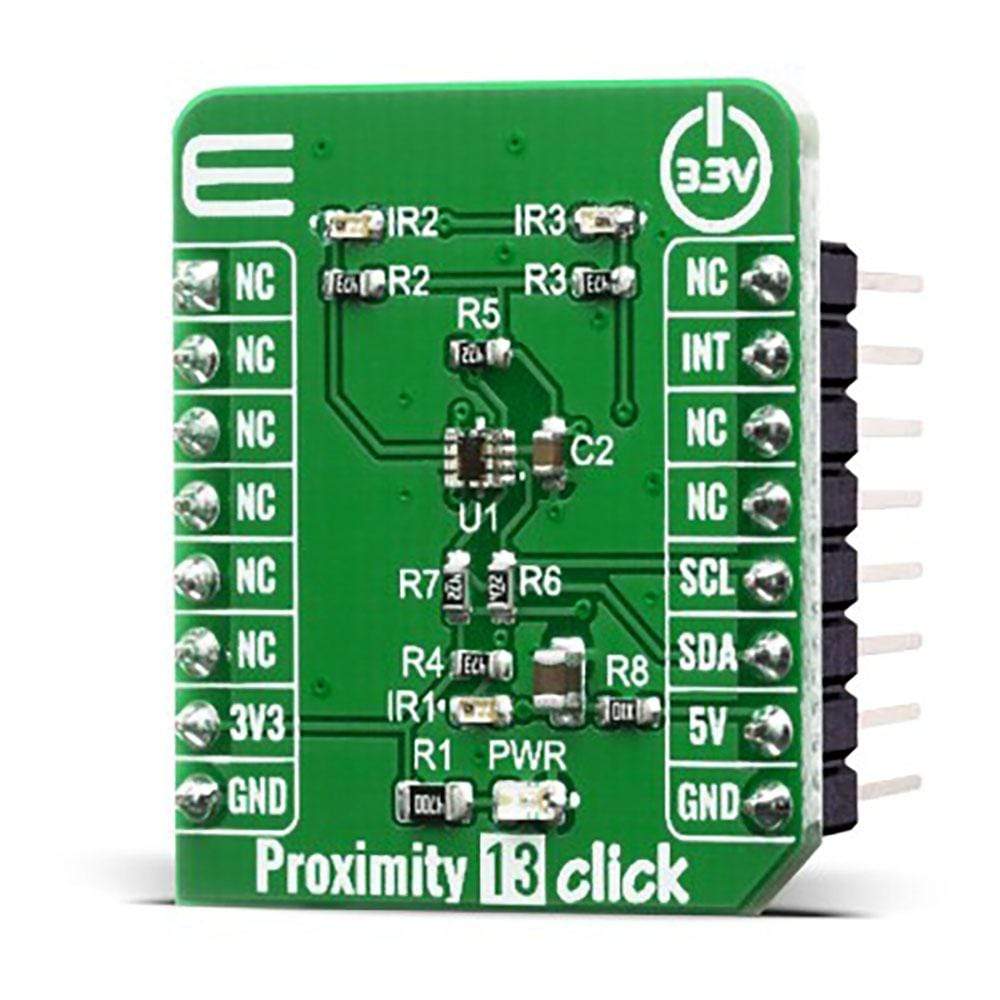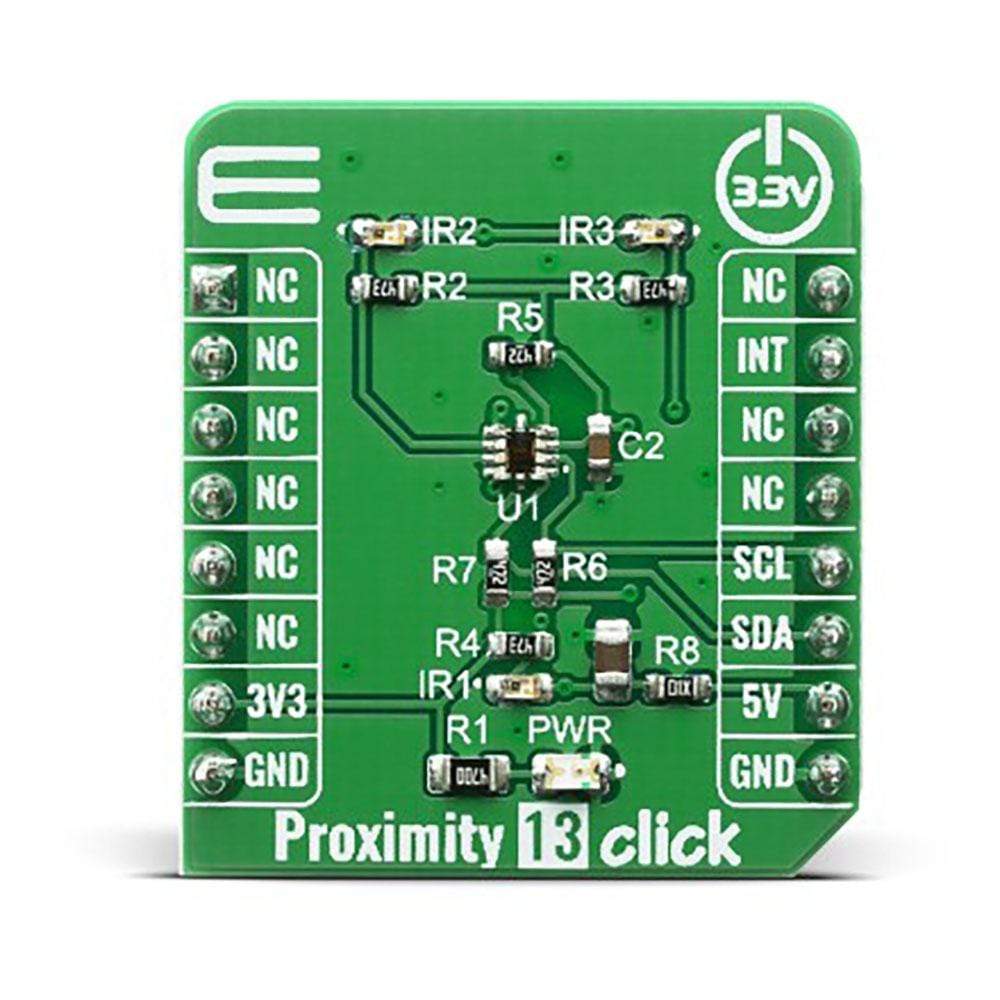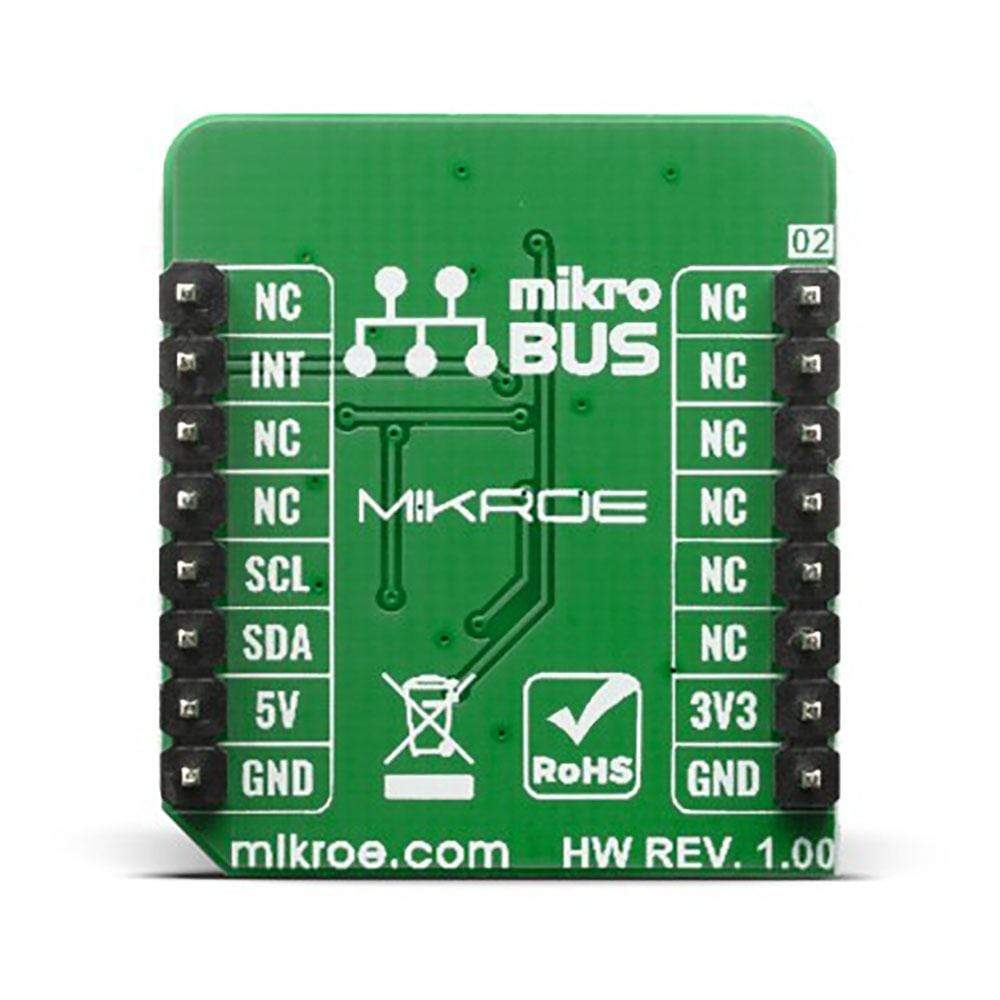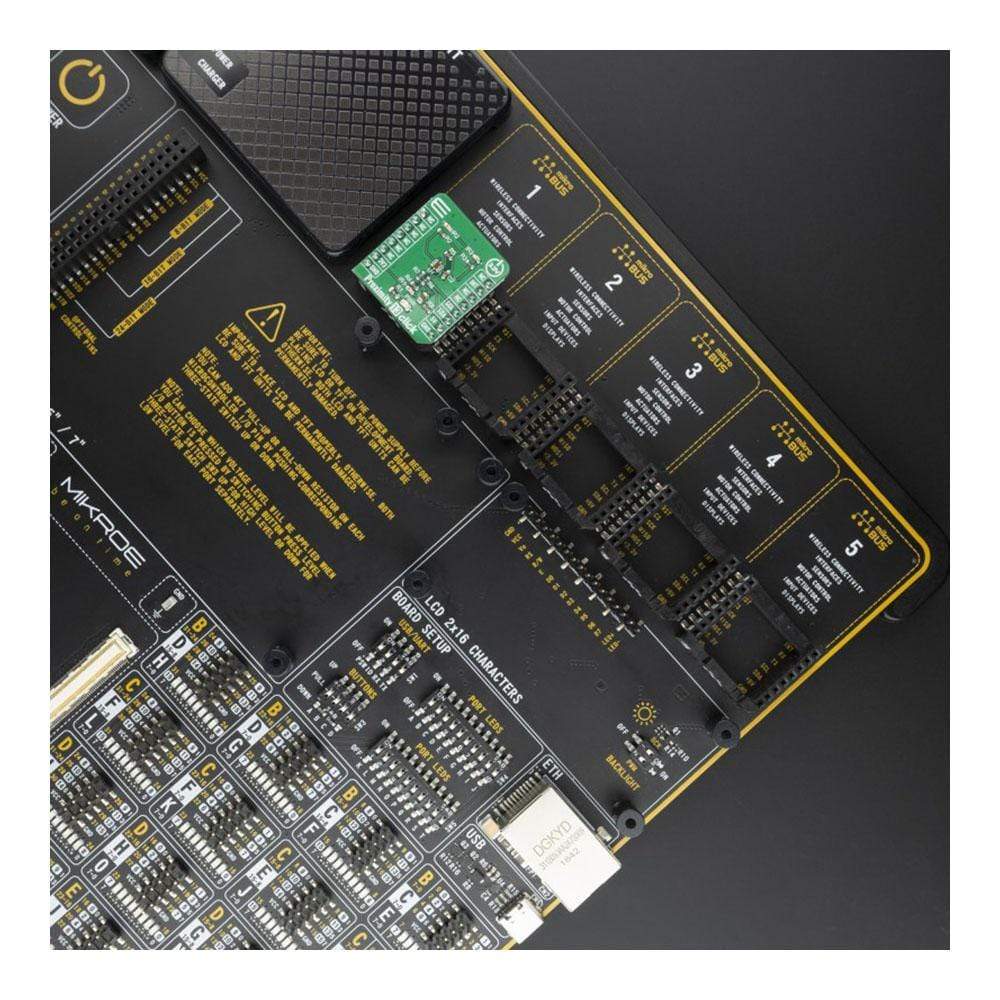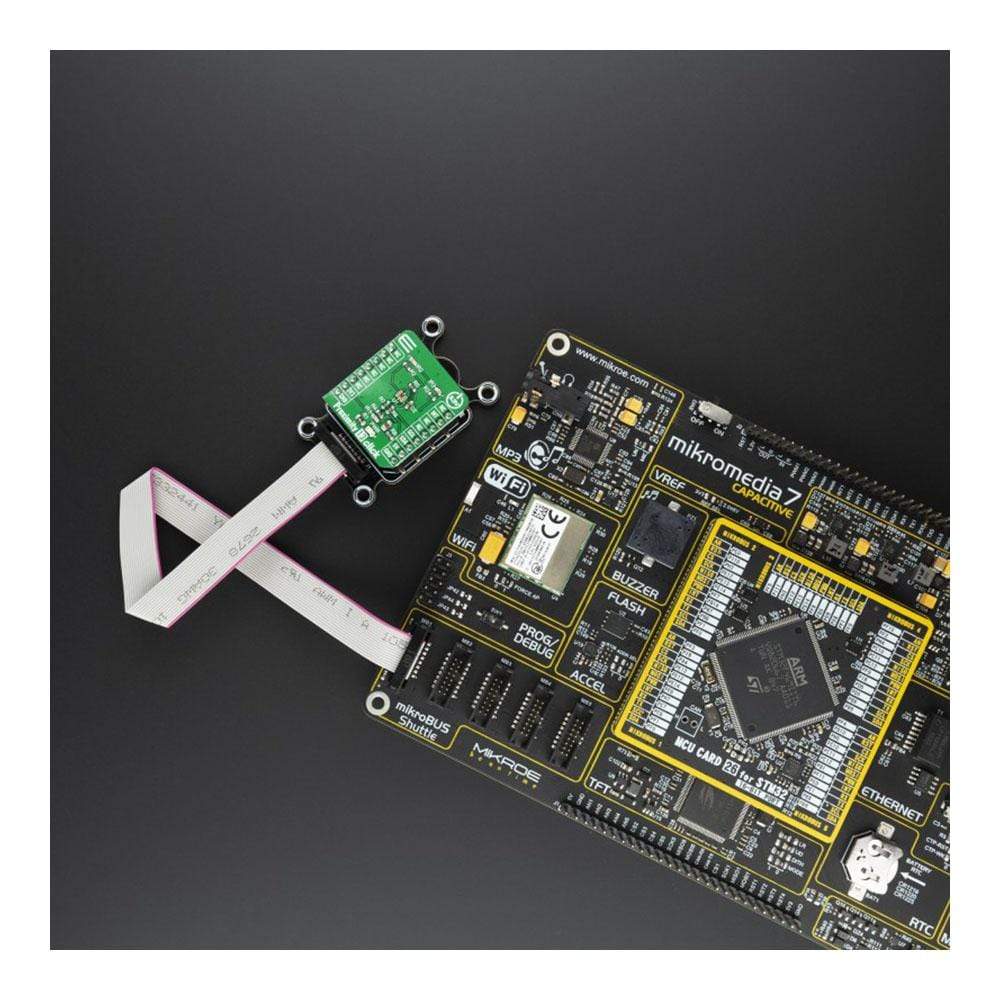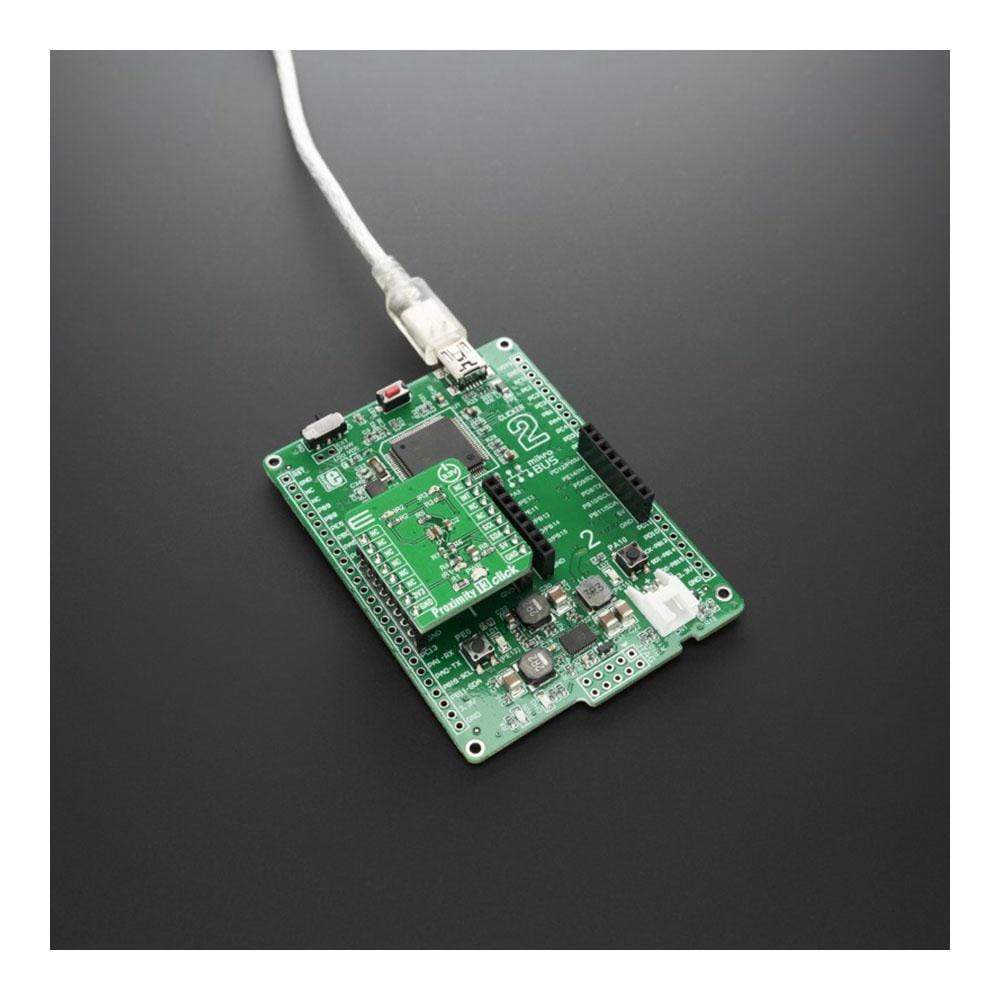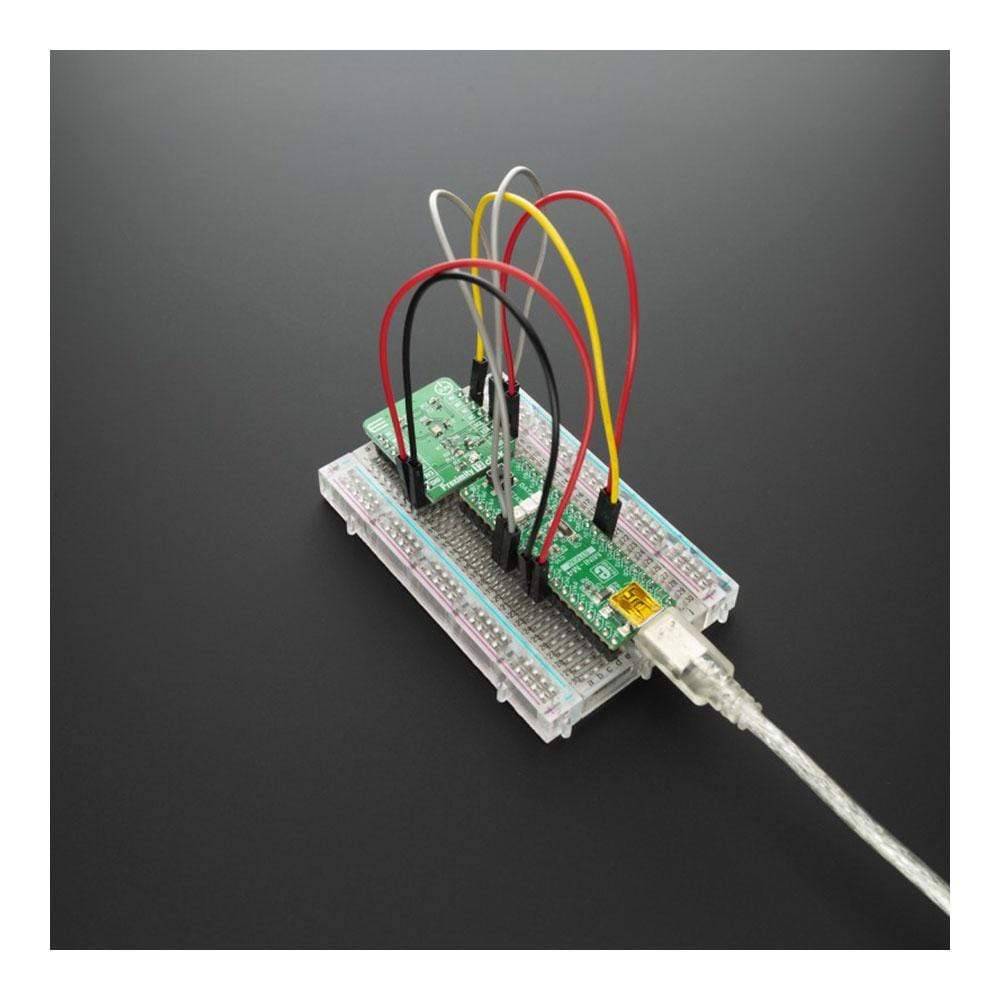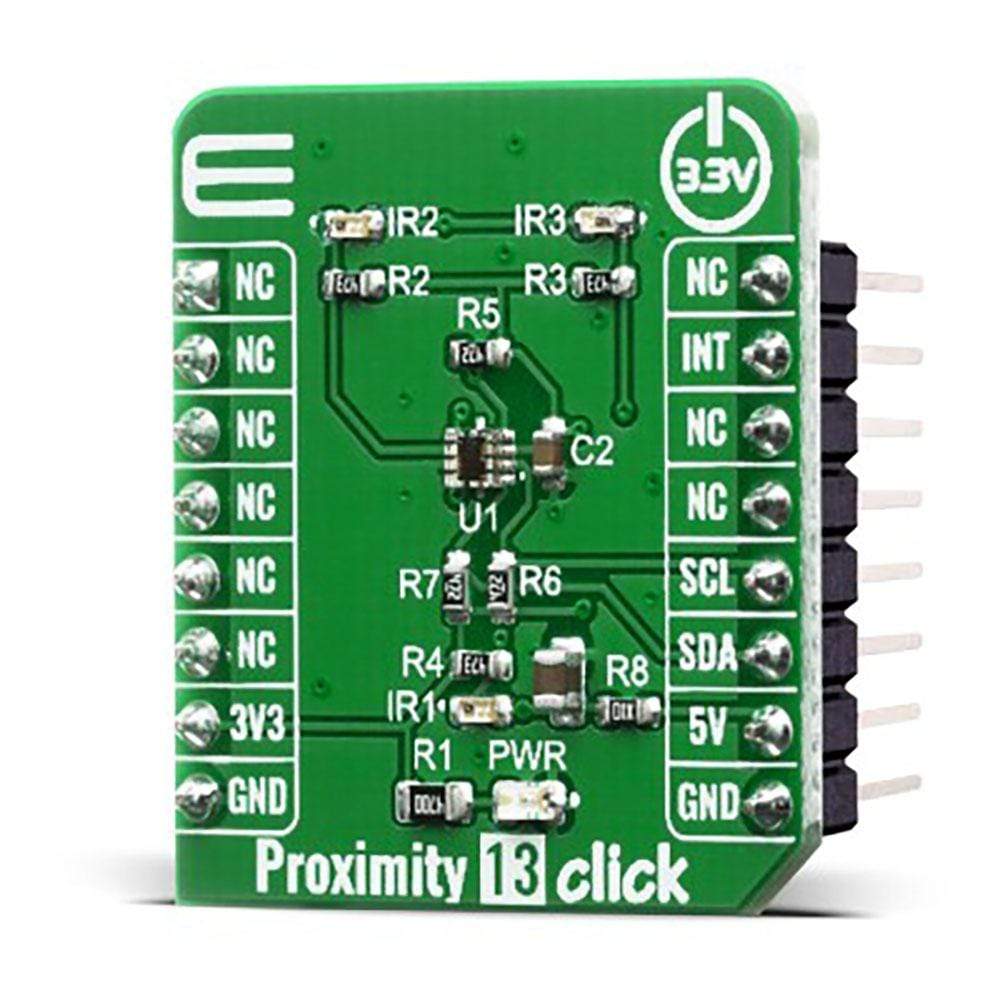
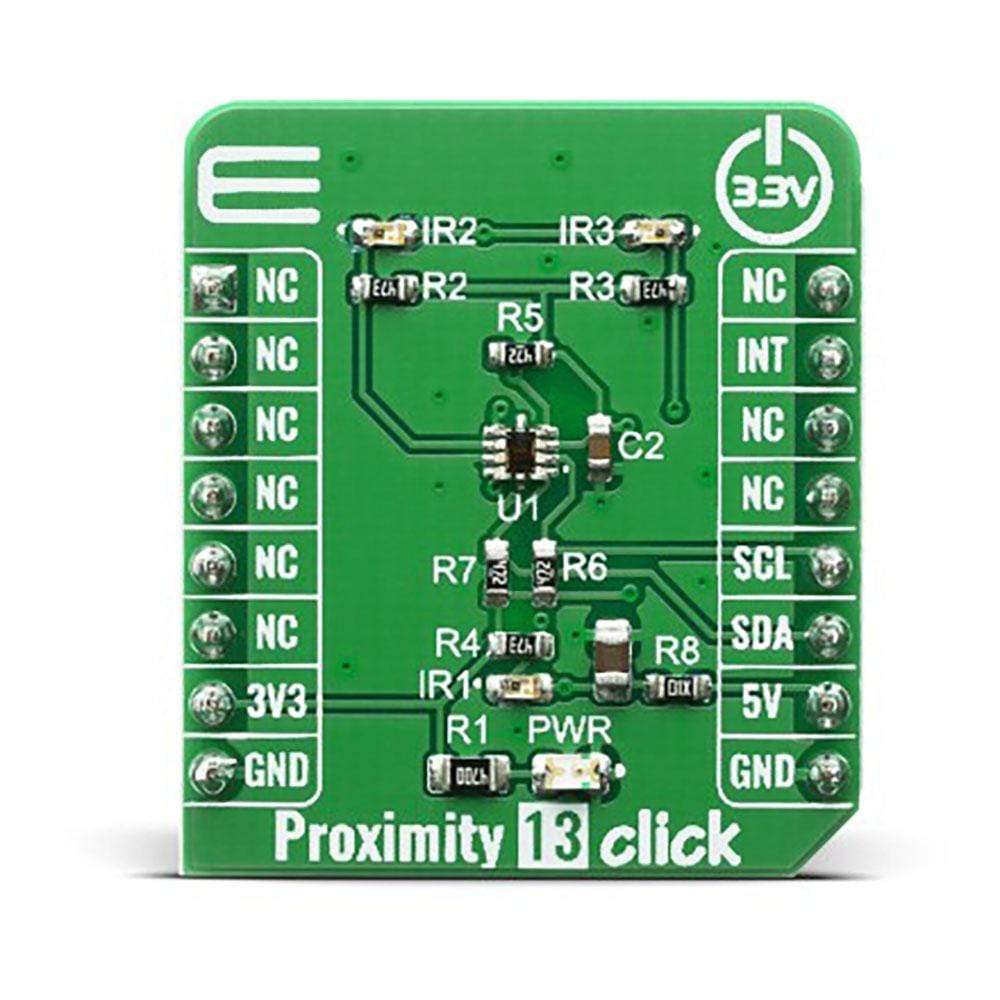
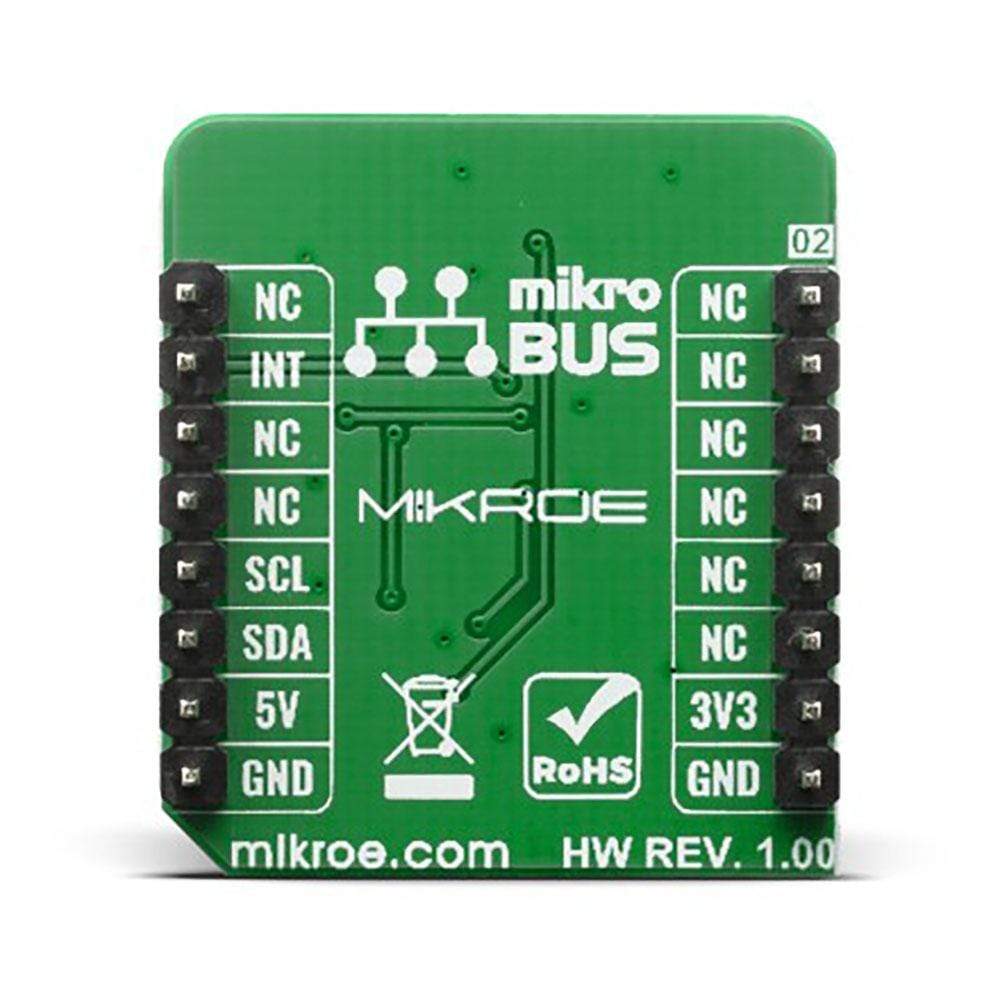
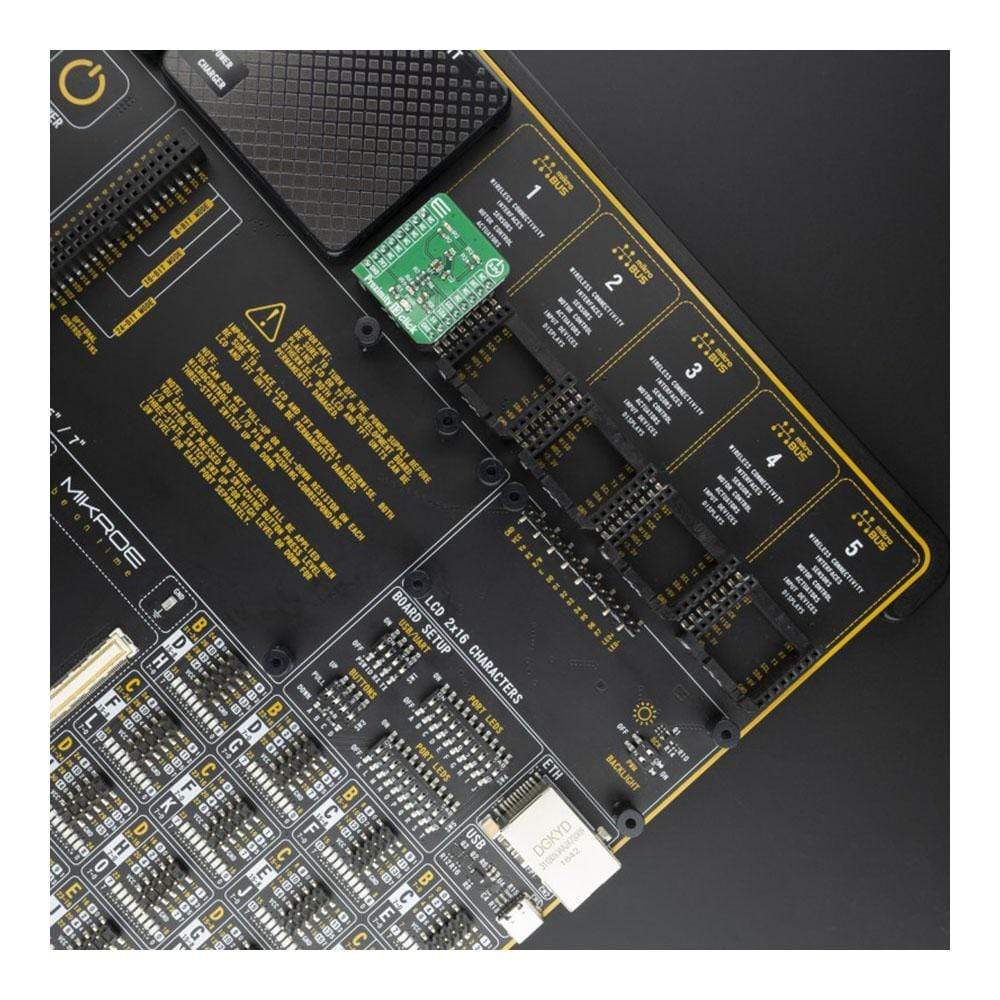
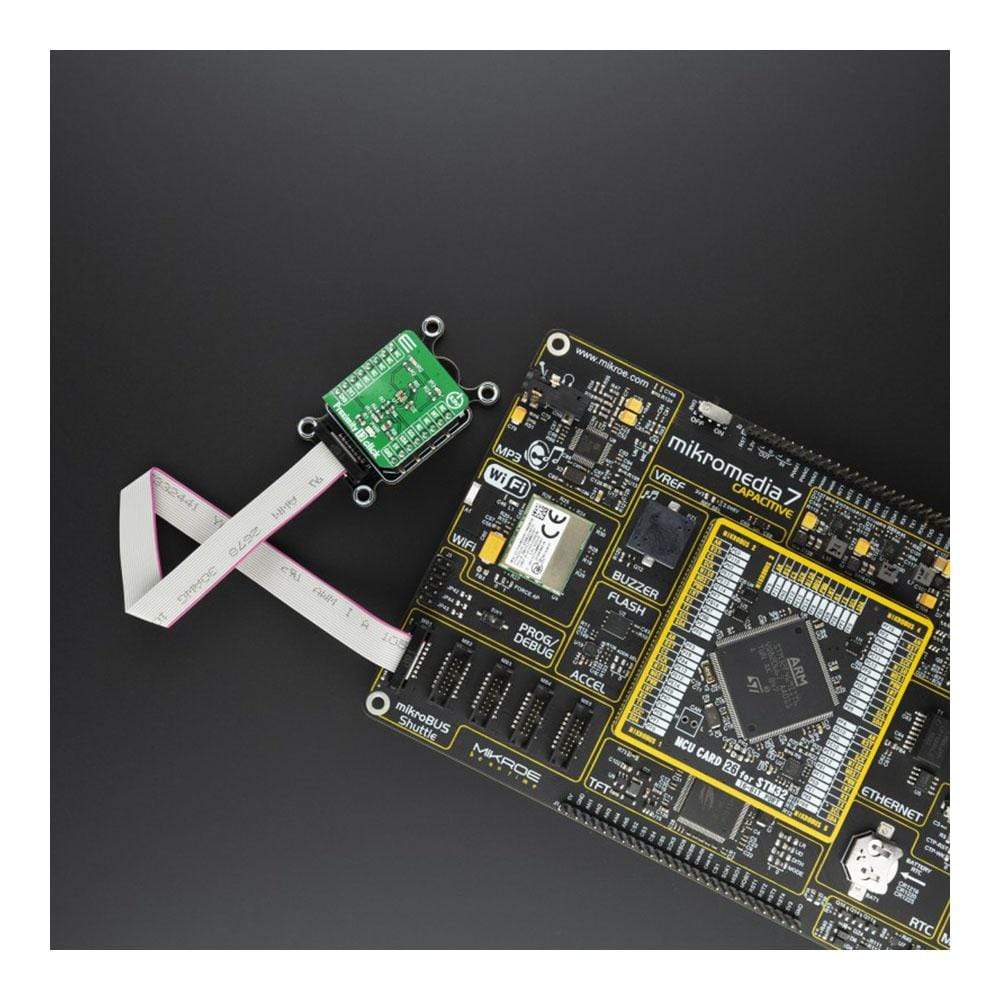
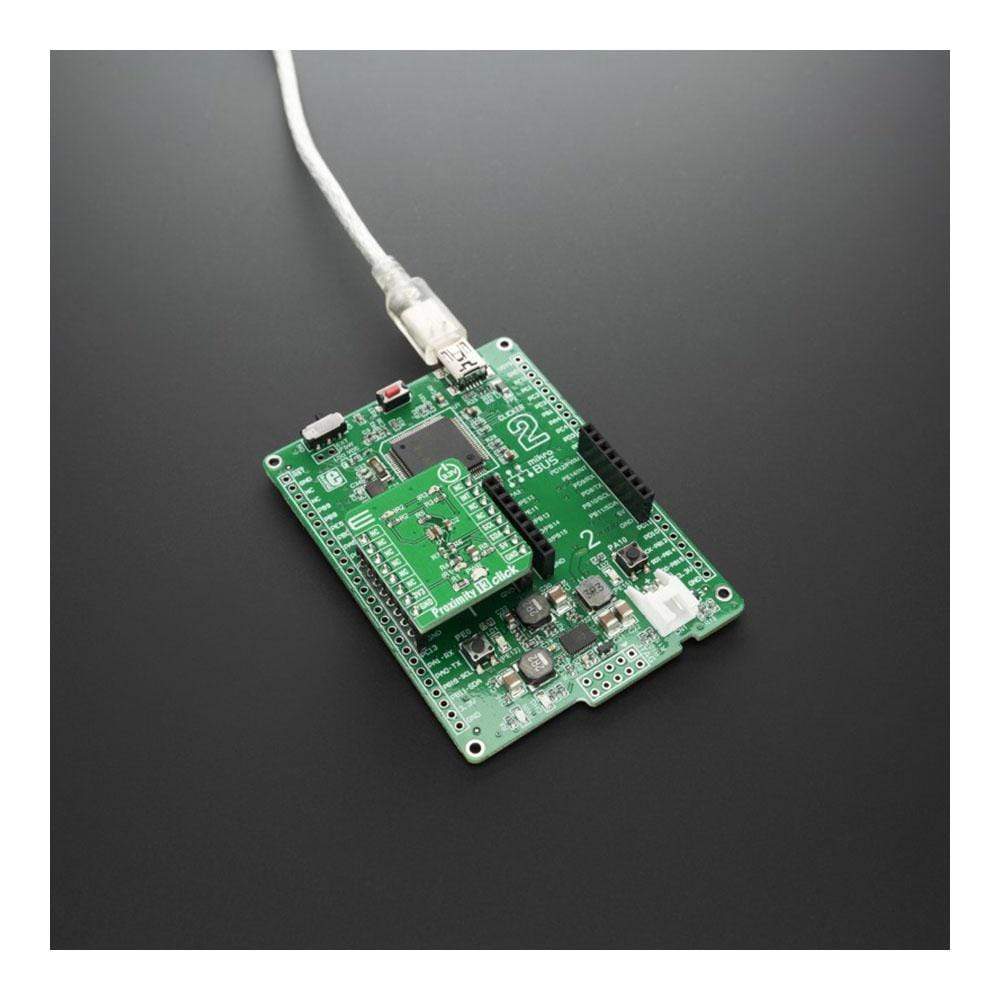
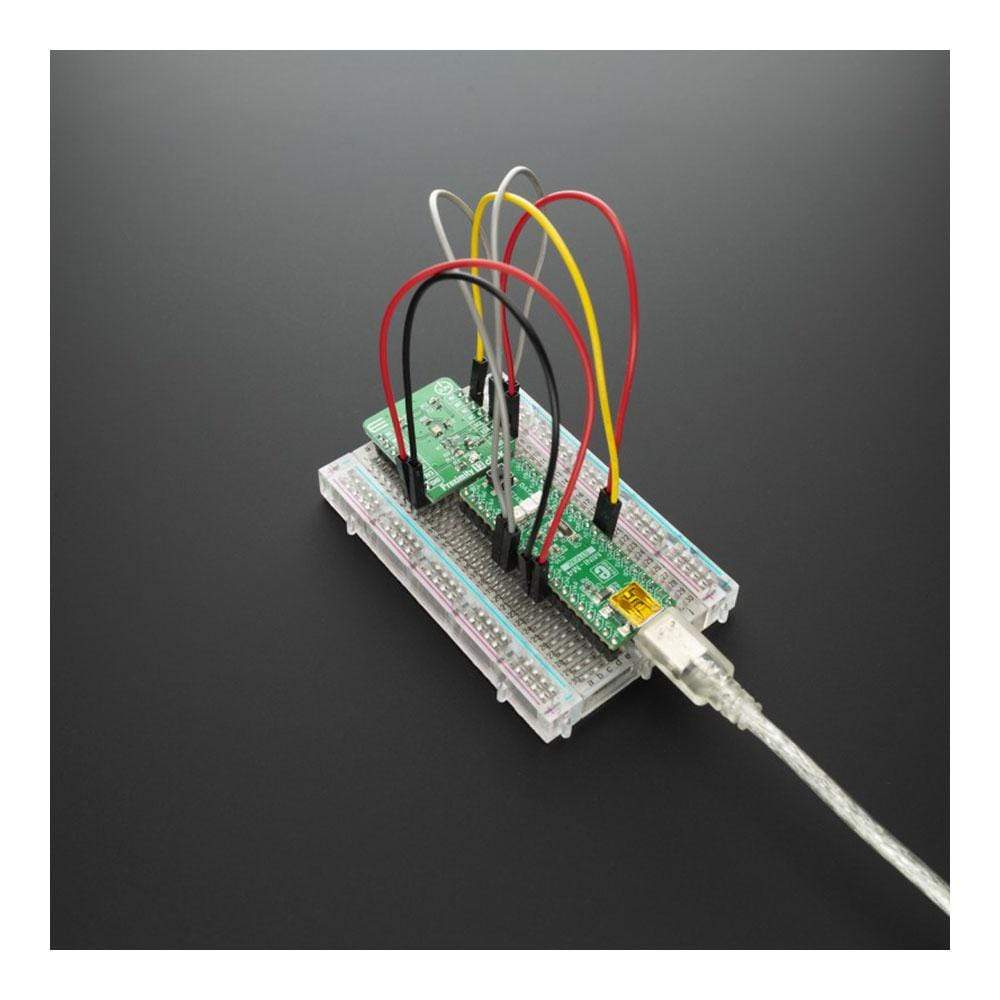
Overview
The Proximity 13 Click Board™ is based on SI1153-AB09-GMR IC from Silicon Labs that can be used as a proximity, and gesture detector with I2C digital interface and programmable-event interrupt output. The host can send command the Proximity 13 click to initiate on-demand proximity measurements. The host can also place the click board in an autonomous operational state where it performs measurements at set intervals and interrupts the host either after each measurement is completed or whenever the sample is larger/smaller than a set threshold value or exits/enters a set threshold window.
The Proximity 13 Click Board™ is supported by a mikroSDK compliant library, which includes functions that simplify software development. This Click Board™ comes as a fully tested product, ready to be used on a system equipped with the mikroBUS™ socket.
Downloads
Der Proximity 13 Click Board™ basiert auf SI1153-AB09-GMR IC von Silicon Labs, das als Näherungs- und Gestendetektor mit digitaler I2C-Schnittstelle und programmierbarem Ereignis-Interrupt-Ausgang verwendet werden kann. Der Host kann dem Proximity 13 Click Befehle senden, um Näherungsmessungen auf Abruf zu initiieren. Der Host kann das Click Board auch in einen autonomen Betriebszustand versetzen, in dem es Messungen in festgelegten Intervallen durchführt und den Host entweder nach Abschluss jeder Messung oder immer dann unterbricht, wenn die Probe größer/kleiner als ein festgelegter Schwellenwert ist oder ein festgelegtes Schwellenwertfenster verlässt/eintritt.
Das Proximity 13 Click Board™ wird von einer mikroSDK-kompatiblen Bibliothek unterstützt, die Funktionen enthält, die die Softwareentwicklung vereinfachen. Dieses Click Board™ wird als vollständig getestetes Produkt geliefert und ist bereit für den Einsatz auf einem System, das mit der mikroBUS™-Buchse ausgestattet ist.
| General Information | |
|---|---|
Part Number (SKU) |
MIKROE-3991
|
Manufacturer |
|
| Physical and Mechanical | |
Weight |
0.017 kg
|
| Other | |
Country of Origin |
|
HS Code Customs Tariff code
|
|
EAN |
8606018718443
|
Warranty |
|
Frequently Asked Questions
Have a Question?
Be the first to ask a question about this.

